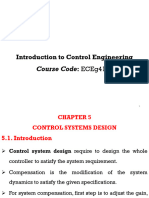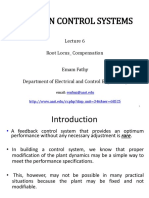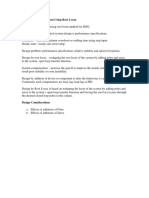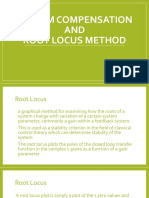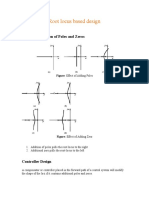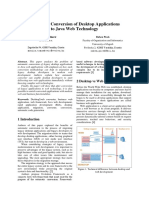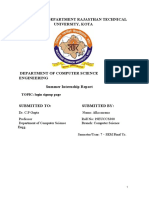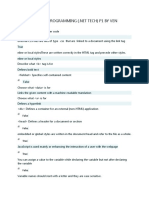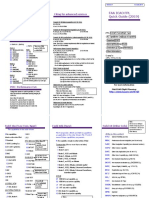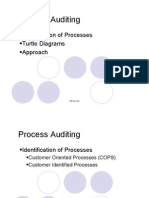0% found this document useful (0 votes)
45 views21 pagesLecture 4 Introduction To Compensation
The document provides an introduction to compensation in control systems. It discusses how compensators can be added to control systems to improve performance issues related to stability, speed of response, and steady-state error. Common compensator configurations include series and parallel compensation. Typical compensators used are lead, lag, and lag-lead compensators, which can be realized using circuits, electrical networks, or mechanical networks. The addition of poles to a system's transfer function tends to reduce stability and response speed, while the addition of zeros has the opposite effect of increasing stability and response speed.
Uploaded by
Naddaa MohamedCopyright
© © All Rights Reserved
We take content rights seriously. If you suspect this is your content, claim it here.
Available Formats
Download as PDF, TXT or read online on Scribd
0% found this document useful (0 votes)
45 views21 pagesLecture 4 Introduction To Compensation
The document provides an introduction to compensation in control systems. It discusses how compensators can be added to control systems to improve performance issues related to stability, speed of response, and steady-state error. Common compensator configurations include series and parallel compensation. Typical compensators used are lead, lag, and lag-lead compensators, which can be realized using circuits, electrical networks, or mechanical networks. The addition of poles to a system's transfer function tends to reduce stability and response speed, while the addition of zeros has the opposite effect of increasing stability and response speed.
Uploaded by
Naddaa MohamedCopyright
© © All Rights Reserved
We take content rights seriously. If you suspect this is your content, claim it here.
Available Formats
Download as PDF, TXT or read online on Scribd
/ 21

















